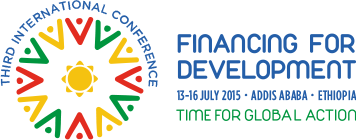by Fraser Brown
11 July 2015
One of the highlights of the UN Climate Summit last September was the New York Declaration on Forests, which, if implemented, could reduce annual carbon dioxide emissions by 4.5-8.8 billion tons annually, equivalent to removing a billion cars from the world’s roads.
The most commonly repeated commitments of the Declaration include the Bonn Challenge target to restore 150 million hectares of degraded landscapes and forestlands by 2020, along with new ambition to restore at least an additional 200 million hectares by 2030. Also, the pledge of dozens of companies, non-profit organizations, and governments to work together to halve forest loss by 2020 and end it altogether by 2030 made international headlines.
A less well-publicised commitment of the Declaration is to: “Include ambitious, quantitative forest conservation and restoration targets for 2030 in the post-2015 global development framework, as part of new international sustainable development goals.”
The “landscape” sector has been quietly undergoing its own revolution in addressing the paradigm shift from ODA-based progress to leveraging public finance and support in order to crowd in private investors. A recent gathering at the Royal Society in London saw over 200 experts from the finance and investment community focusing on scaling up sustainable landscape solutions. The hosts, CIFOR, unveiled plans for a smallholder-focused “Landscape Fund” and the Global Mechanism for its “Landscape Degradation Neutrality Fund” aimed at restoring 12 million hectares of degraded land each year, to be launched this coming December. Other initiatives, such as the one 20×20 announced at the FAO’s Rome meeting just last week on “Financing Forest Landscape Restoration”, report that almost half a billion of private sector finance has now been mobilised with many diverse public and private partners cooperating with innovative guarantees and different forms of combined and blended finance to realise the 20 million hectare restoration goal by 2020.
The International Union for Conservation of Nature (IUCN) has emerged as a leading proponent as well as evaluator of the cost/benefit of global landscape restoration. According to estimates by IUCN, reaching the restoration target of the Bonn Challenge would generate approximately USD 84 billion annually for national and local economies, as well as USD 6 billion in additional crop yields. IUCN and World Resources Institute (WRI) are currently working with over a dozen countries on Restoration Opportunities Assessments that, along with other analyses, assess the potential returns on investment for Forest Landscape Restoration interventions such as agroforestry, protective forests and natural forests. The results are encouraging. In Rwanda, for example, the assessment reveals ROI propositions between 20 and 35% for many of the proposed interventions, setting the scene for a live discussion about the role of development finance in achieving Rwanda’s Bonn Challenge pledge of 2 million hectares.
WRI’s side event with FAO on Monday, 13 July 2015, at 10.00 am in the Radisson BLU will touch on many of these topics under the heading “Credible information to Facilitate Investing in land restoration”.
Global Forest Landscape Restoration and the Bonn Challenge are instrumental to many of the SDGs and, as the New York Declaration urged, ambitious, quantitative forest conservation and restoration targets for 2030 should be included in the post-2015 global development framework, as part of new international sustainable development goals.

